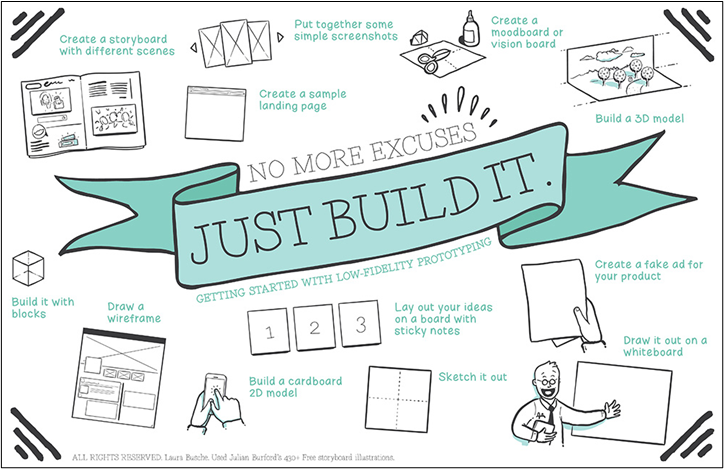Week 5 Overview: Prototype
Introduction

This is another totally project-oriented week. Groups will be selecting one of the ideas generated in last week’s brainstorming to develop further. NB: it’s highly unlikely that this round of prototyping will result in something that’s functional or tangible; the purpose of a prototype is often to tell the story of an idea, to contextualize it so that your audience can picture what it is and how it hypothetically works more richly. Your task this week is to bring your group’s idea to life by creating this suite of project assets:
- user journey: this document walks the audience through how a user would interact with the product or service you’re imagining.
- functional specifications: this is a document that basically provides a written description of how and by which mechanisms the product/service works (very generally).
- model: some kind of visual representation of the product/service. This could be a flowchart, drawing, diagram, wireframe, website, cardboard mock-up; anything that enables an audience to engage interactively with your idea.
Course Competencies
- Develop a strong understanding of the design thinking process and how it can be applied in a variety of industry settings.
- Understand the terminology and conceptual models used in design disciplines.
- Recognize the ethical and social dilemmas and obligations of the practice of design.
- Diagnose common adoption barriers in individuals, groups and organizations.
- Participate in and lead innovation in creative and collaborative settings.
- Undertake complex and unstructured problem-solving challenges in unfamiliar domains.
- Identify the necessary skill sets and mindset to practice design thinking.
- Utilize a human-centered approach to research to understand and tackle complex social problems and build empathy for target audiences.
- Create prototypes and/or proof of concepts for user testing.
- Develop and test innovative ideas through a rapid iteration cycle.
Learning Objectives
- Triage a range of project ideas to confidently select one worth developing further.
- Triage logistical constraints to determine how and what to prototype that will best represent the idea you’re proposing to an audience.
- Appreciate the utility of different levels of fidelity in prototyping.
- Practice collaboration.
- Become familiar with different types of design deliverables typically used in professional contexts.
To-Do List: (in sequential order)
- Assignment:
- User Journey Map
- Reading/Viewing:
- A Beginner’s Guide To User Journey Mapping
- Spec Sheet
- Reading/Viewing:
- Functional Specification Documents: your complete guide
- Reading/Viewing:
- Model
- Reading/Viewing:
- Prototyping for Designers – ch. 2: Why We Prototype
- The Skeptic’s Guide To Low-Fidelity Prototyping
- Reading/Viewing:
- Reading/Viewing:
- User Journey Map
- Discussion Board:
- Weekly Progress Report